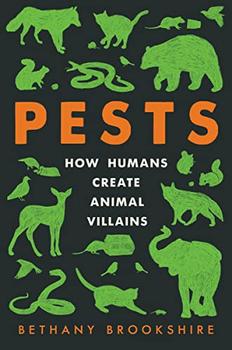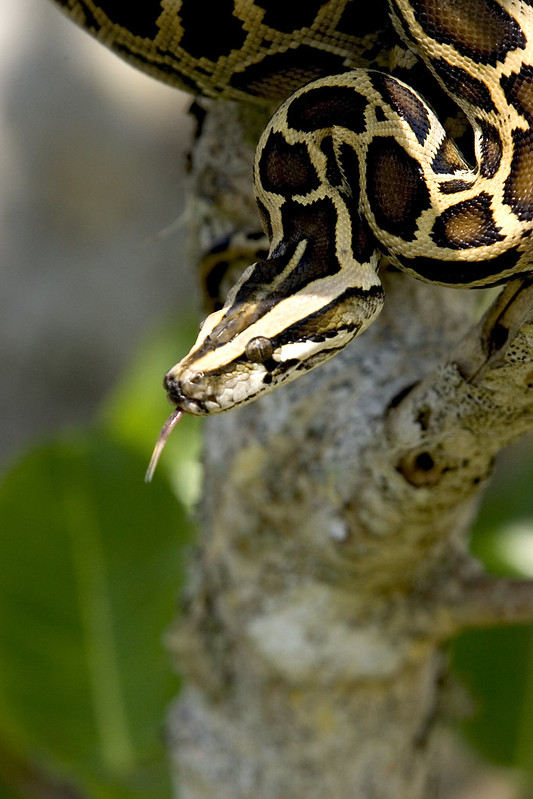Summary | Excerpt | Reviews | Beyond the book | Read-Alikes | Genres & Themes | Author Bio

How Humans Create Animal Villains
by Bethany BrookshireAn engrossing and revealing study of why we deem certain animals "pests" and others not - from cats to rats, elephants to pigeons - and what this tells us about our own perceptions, beliefs, and actions, as well as our place in the natural world.
A squirrel in the garden. A rat in the wall. A pigeon on the street. Humans have spent so much of our history drawing a hard line between human spaces and wild places. When animals pop up where we don't expect or want them, we respond with fear, rage, or simple annoyance. It's no longer an animal. It's a pest.
At the intersection of science, history, and narrative journalism, Pests is not a simple call to look closer at our urban ecosystem. It's not a natural history of the animals we hate. Instead, this book is about us. It's about what calling an animal a pest says about people, how we live, and what we want. It's a story about human nature, and how we categorize the animals in our midst, including bears and coyotes, sparrows and snakes. Pet or pest? In many cases, it's entirely a question of perspective.
Bethany Brookshire's deeply researched and entirely entertaining book will show readers what there is to venerate in vermin, and help them appreciate how these animals have clawed their way to success as we did everything we could to ensure their failure. In the process, we will learn how the pests that annoy us tell us far more about humanity than they do about the animals themselves.
It's worth noting that Brookshire focuses her book on vertebrates, since they prove much more polarizing than, say, mosquitoes or lice. She starts off with some high-profile pests—rats and snakes—whose very presence is likely to prompt not only loathing but also fear. But, she points out, even those reactions are learned, culturally specific, and, in many cases, revealing of human shortcomings. Wealthy Americans, for example, are apt to point fingers at poor folks living in rat-infested apartment buildings, calling them careless or their homes unsanitary, or to turn up their noses at high concentrations of rats living among encampments of unhoused individuals. Brookshire indicates that perhaps it would be more instructive to examine whether exploitative landlords or the lack of homeless services are the real villains here...continued
Full Review
 (688 words)
(688 words)
(Reviewed by Norah Piehl).
 In her book Pests, Bethany Brookshire provides several examples of introduced species becoming huge destroyers of local wildlife and ecosystems. One of the most well-known (and perhaps, if you dislike snakes as much as I do, most terrifying) examples of this phenomenon is the Burmese python in Florida. A whole section of the Florida Fish and Wildlife Conservation Commission website is devoted to documenting the extent of the problem—and enlisting residents to try to bring it under control.
In her book Pests, Bethany Brookshire provides several examples of introduced species becoming huge destroyers of local wildlife and ecosystems. One of the most well-known (and perhaps, if you dislike snakes as much as I do, most terrifying) examples of this phenomenon is the Burmese python in Florida. A whole section of the Florida Fish and Wildlife Conservation Commission website is devoted to documenting the extent of the problem—and enlisting residents to try to bring it under control.
Opinions vary about precisely when and how this species, which is native to Southeast Asia, arrived in the Florida Everglades. The issue started sometime in the late 1970s and 1980s, when some owners of exotic snakes took to abandoning their ...

If you liked Pests, try these:

The Salmon Cannon and the Levitating Frog
by Carly Anne York
Published 2025
A brilliant new voice in science writing—"witty, whip-smart, truly one of our best" (Mary Roach)—shows why playfulness and curiosity are the key to science.

by Ben Goldfarb
Published 2024
An eye-opening account of the global ecological transformations wrought by roads, from the award-winning author of Eager.